Consider a box with three terminals on top of it as shown in figure.

Three components namely, two germanium diodes and one resistor are connected across these three terminals in some arrangement
A student performs an experiment in which any two of these three terminals are connected in the circuit shown in figure.
The student obtains graphs of current-voltage characteristics for unknown combination of components between the two terminals connected in the circuit. The graphs are
(i) When A is positive and B is negative
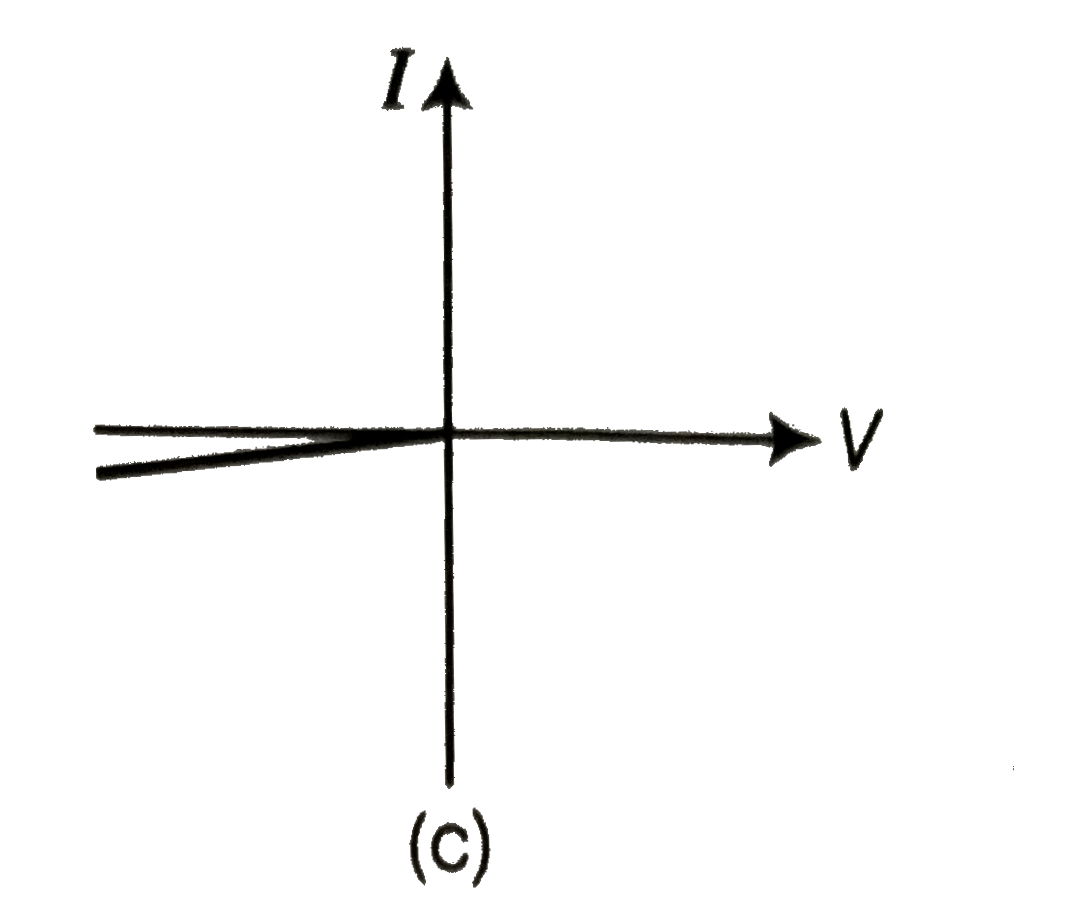
(ii) When A is negative and B is positive
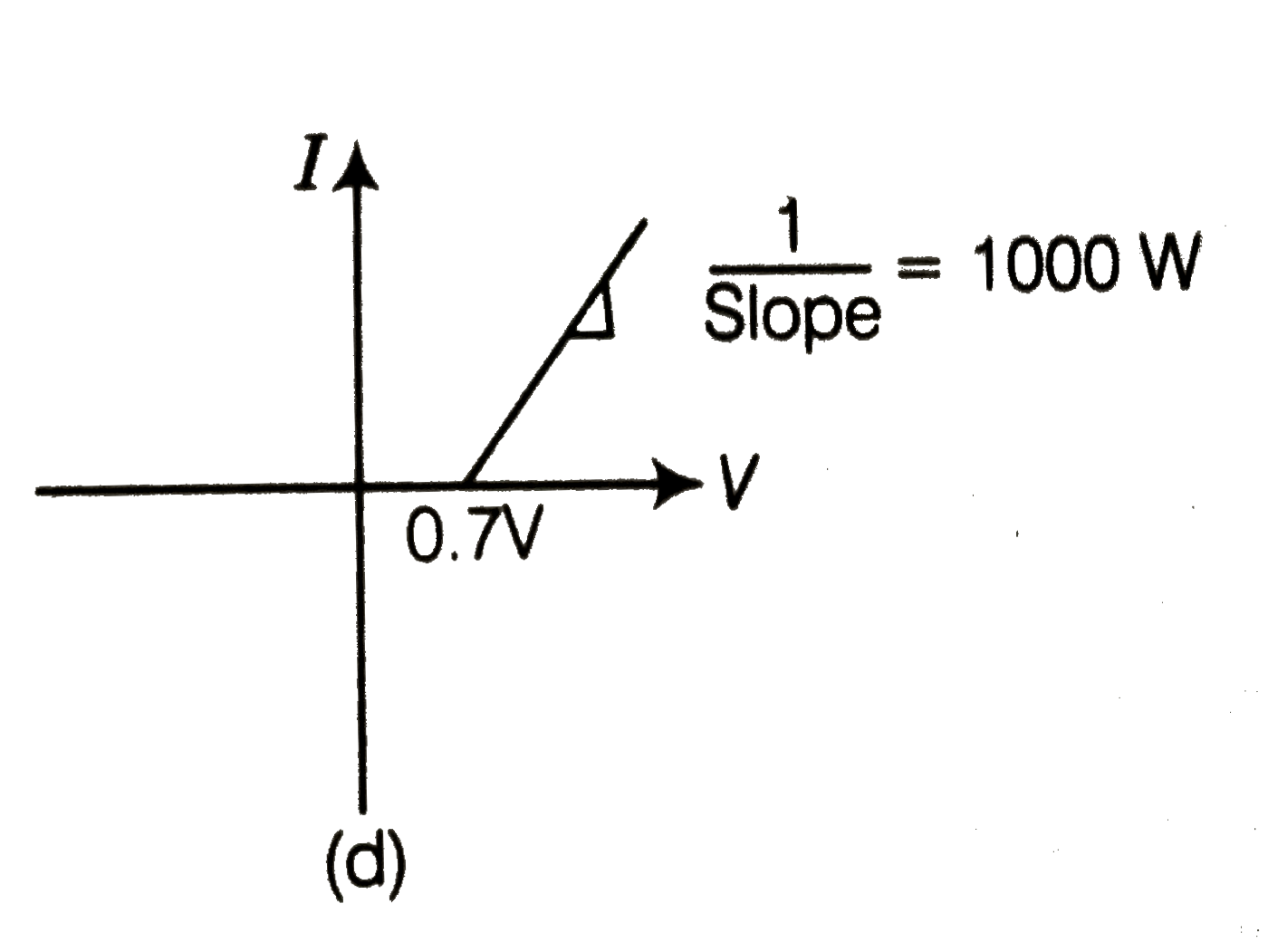
(iii) When B is negative and C is positve

(iv) When B is positive and C is neagtive
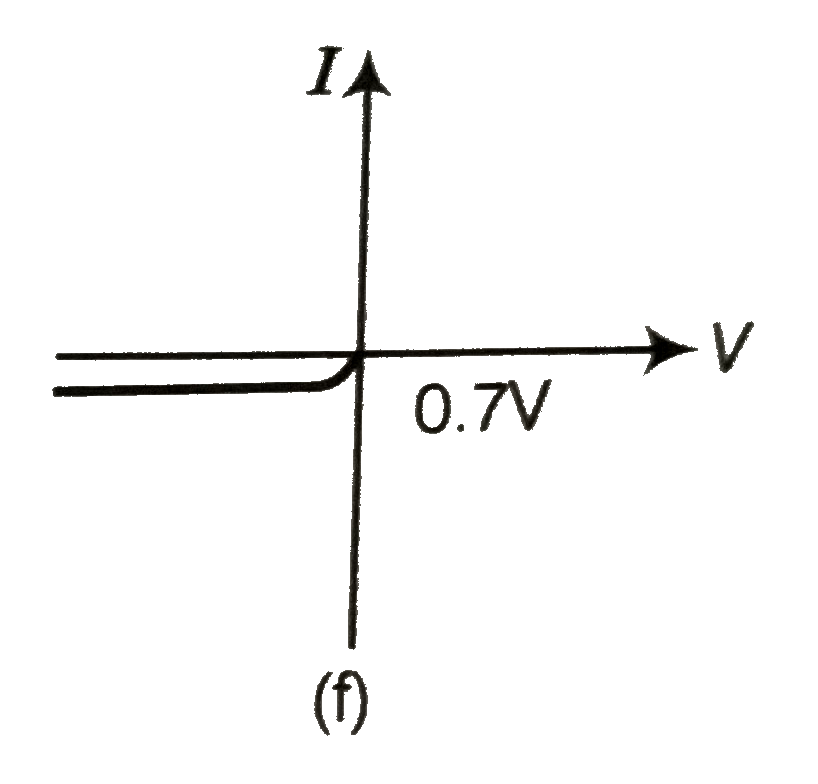
(v) When A is positive and C is negative
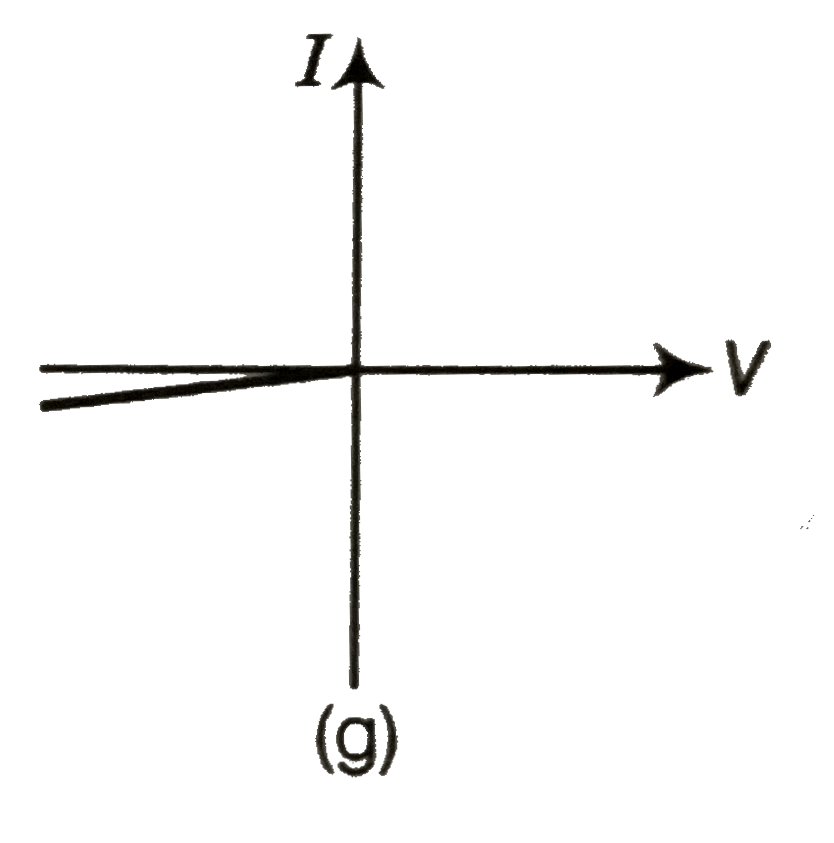
(vi) When A is negative and C is positive
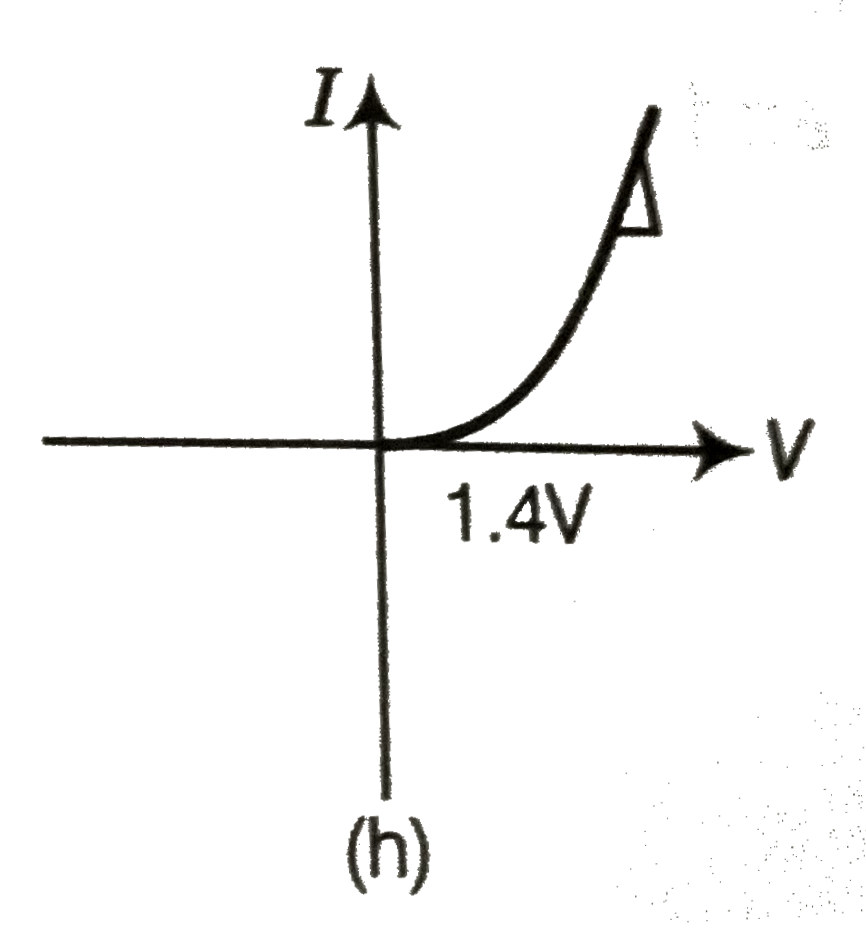
From these graphs of current − voltage characteristic shown in fig. (c) to (h) determine the arrangement of components between A, B and C.
(a) In V−I graph of condition (i), a reverse characteristics is shown in fig. (c). Here A is connected to n−side of p−n junction I and B is connected to p−side of p−n junction I with a resistance in series.
(b) In V−I graph of condition (ii), a forward characteristics is shown in fig. (d), where 0.7V is the knee voltage of p−n junction 11/slope =(1/1000)Ω.
It means A is connected to n− side of p−n junction I and B is connected to p−side of p−n junction I and resistance R is in series of p−n junction I between A and B.
(c) In V=I graph of condition (iii), a forward characteristics is shown in figure (e), where 0.7V is the knee voltage. In this case p−side of p−n junction II is connected to C and n−side of p−n junction II to B.
(d) In V−I graphs of conditions, (iv), (v), (vi) also concludes the above connection of p−n junction I and II along with a resistance R.
Thus, the arrangement of p−nI,p−nII and resistance R between A, B and C will be as shown in the figure.
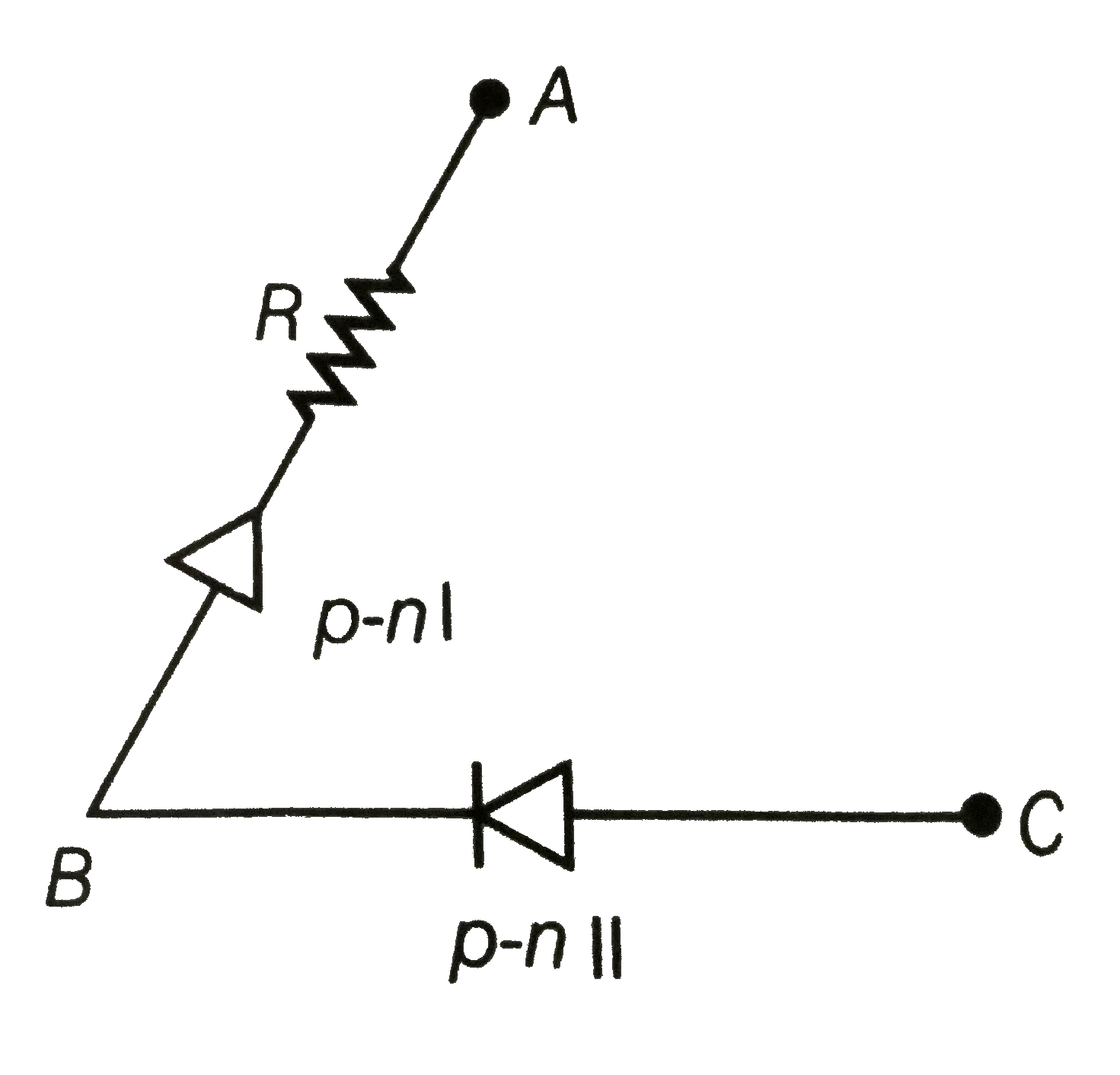
Topper's Solved these Questions
- NUCLEIBOOK - NCERT EXEMPLAR ENGLISHCHAPTER - NUCLEIEXERCISE - Very short Anwer type question
14 Videos
- MOVING CHARNGES AND MAGNETISMBOOK - NCERT EXEMPLAR ENGLISHCHAPTER - MOVING CHARNGES AND MAGNETISMEXERCISE - Long Answer Type Questions
7 Videos
- RAY OPTICS AND OPTICAL INSTRUMENTS BOOK - NCERT EXEMPLAR ENGLISHCHAPTER - RAY OPTICS AND OPTICAL INSTRUMENTS EXERCISE - VERY SHORT ANSWER TYPE QUESTIONS
16 Videos
Similar Questions
Draw the current-voltage characteristics for the device shown in figure between the terminal A and B.
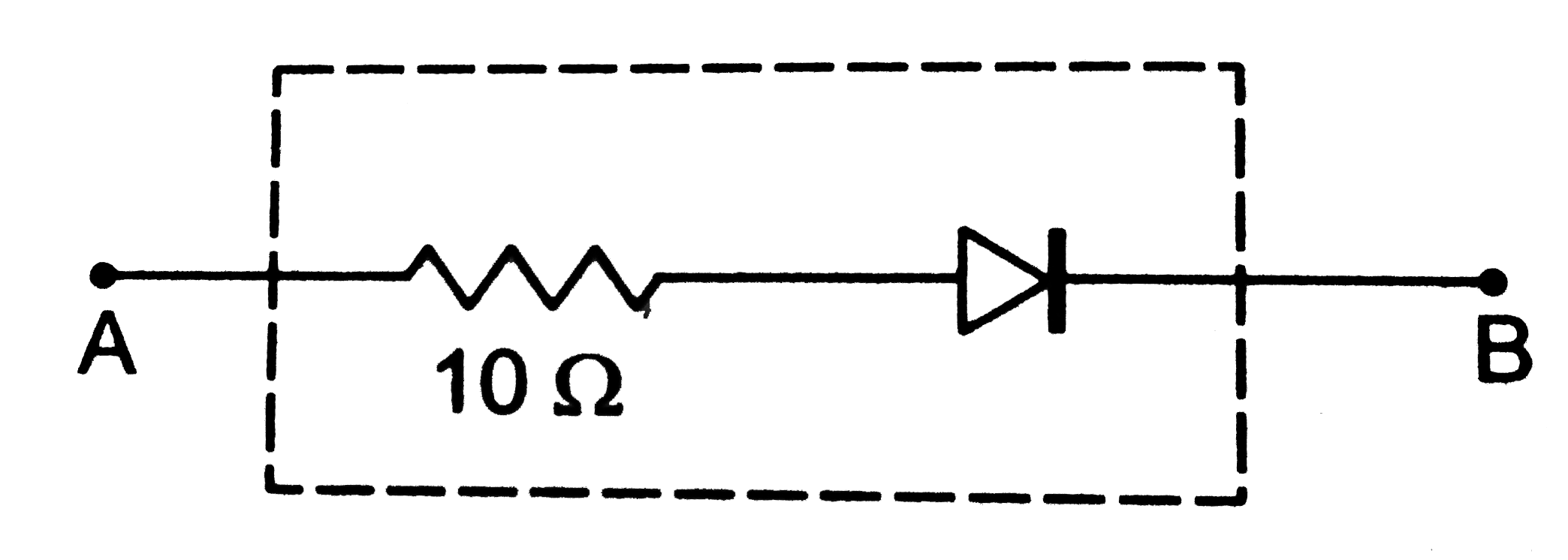

View SolutionPotential different across the terminals of the battery shown in figure is
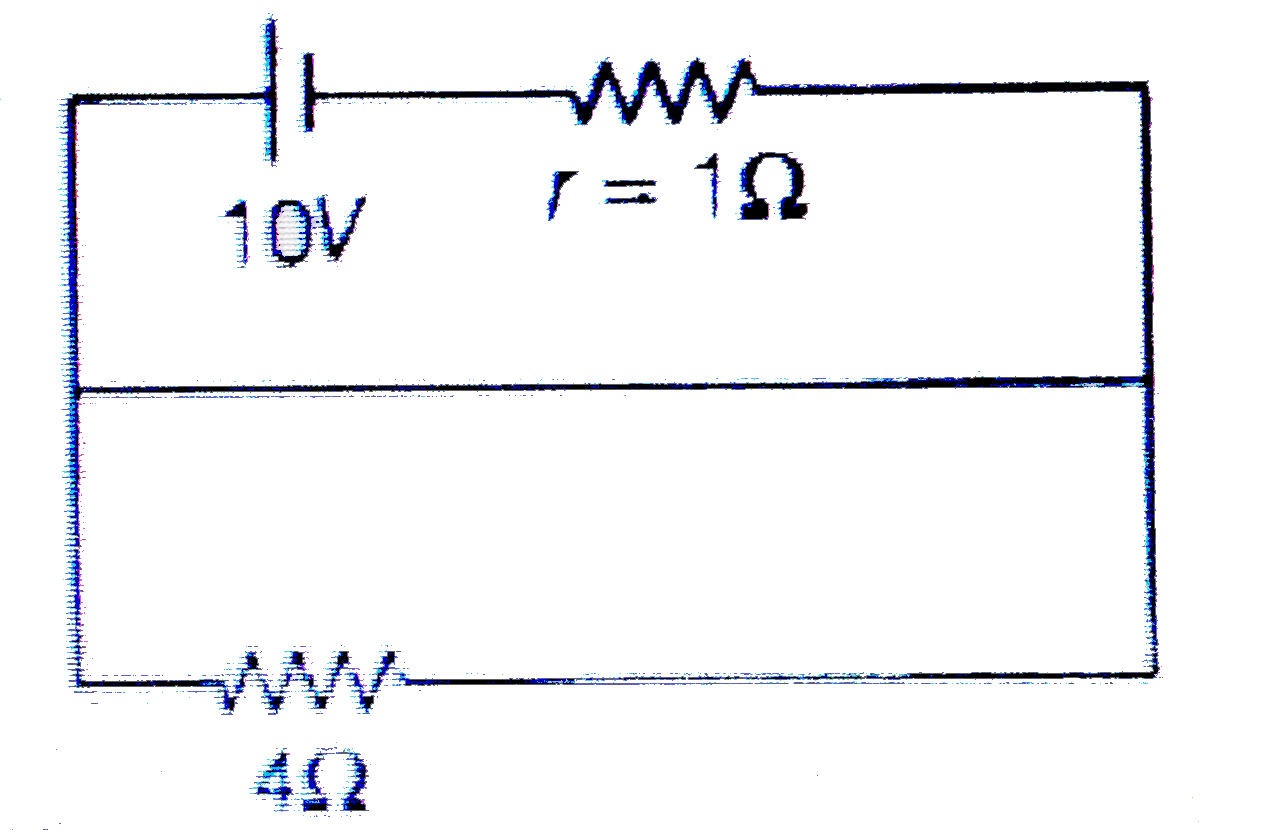
View SolutionThree capacitors A,B and C are connected in a circuit as shown in figure. What is the charge in μC on the capacitor B?
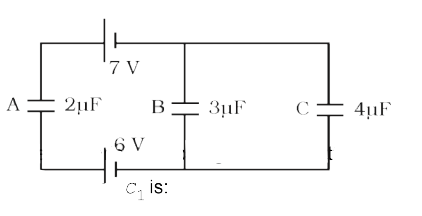
View SolutionThree capacitors are connected as shown in the figure . The potential at point O is equal to
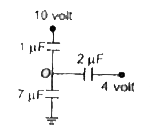
View SolutionName the three connecting wires used in a household circuit.
View SolutionA battery of emf 2 V and initial resistance 1Ω is
connected across terminals A and B of the circuit shown
in figure
 .
.
View SolutionFind the currents through the three resistors shown in Figure
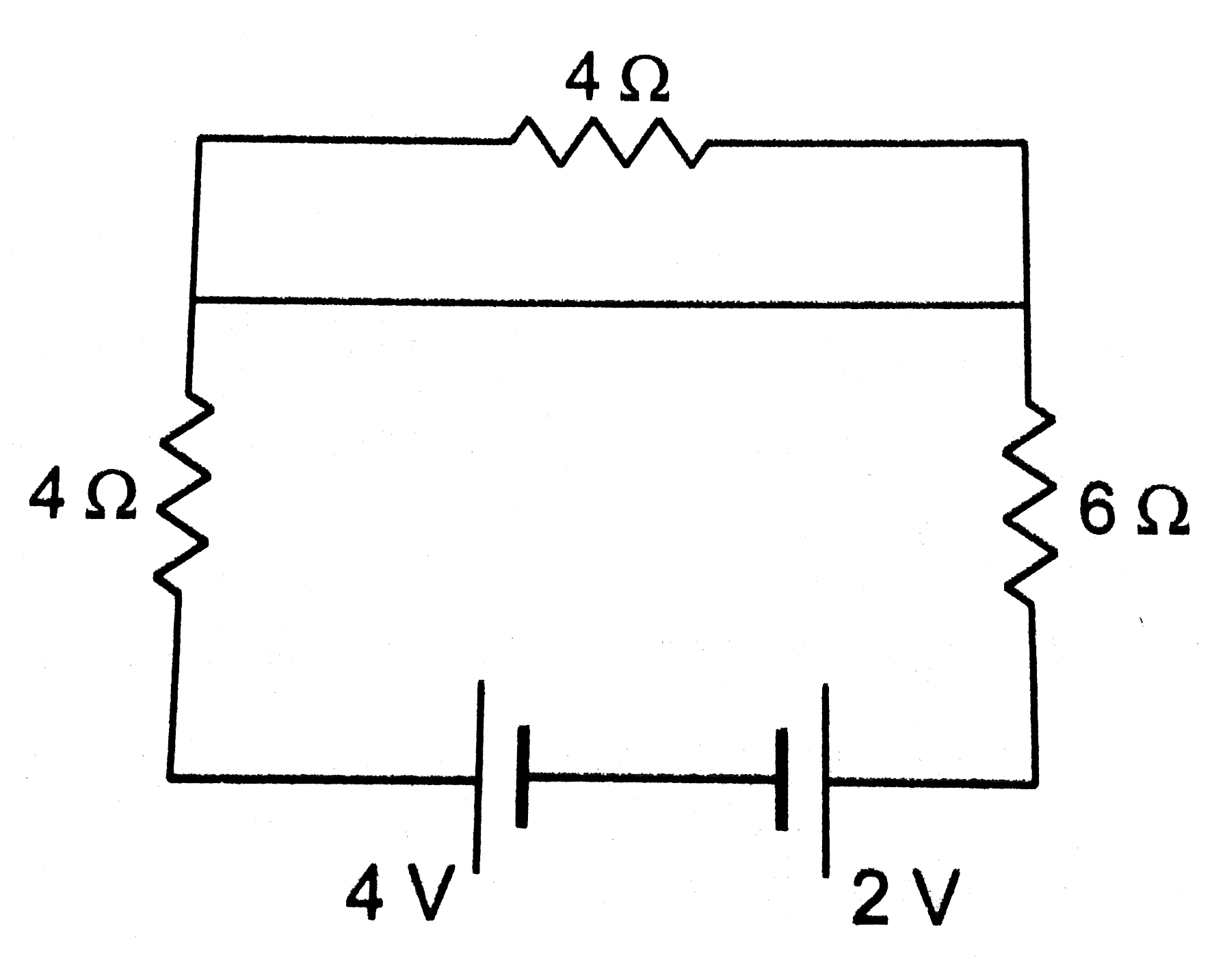
View SolutionThree resistances are connected to form a T-shape as shown in the figure. Then, the current in the 4Ω resistor is
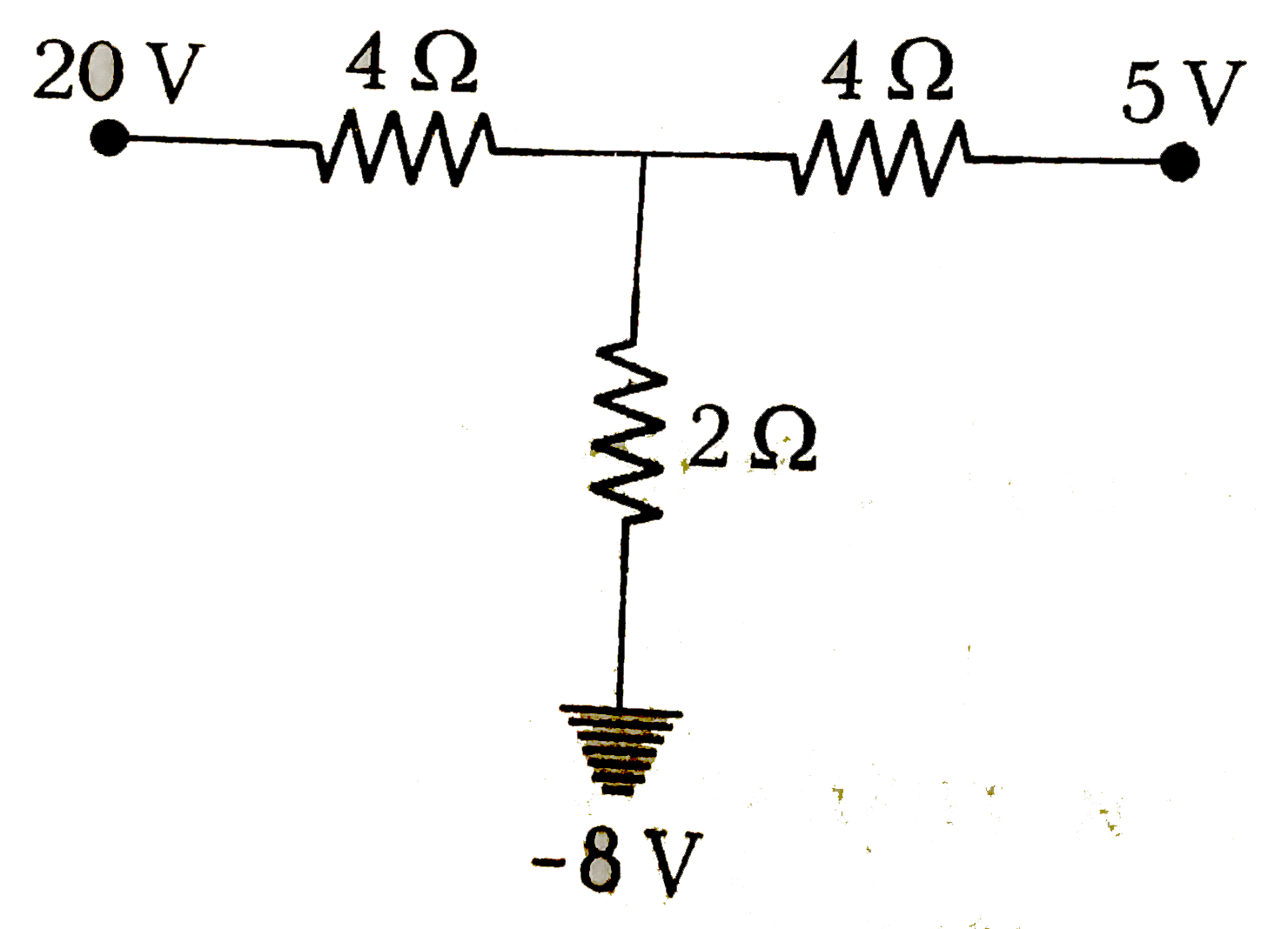
View SolutionGive any four precautions taken by a student to perform an experiment to determine the resultant resistance of two resistors when connected in series.
View SolutionGive any four precautions taken by a student to perform an experiment to determine the resultant resistance of two resistors when connected in series.
View Solution
